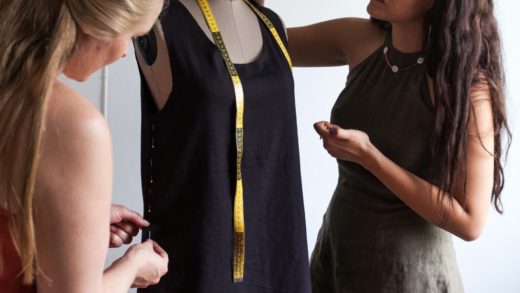Botox and dermal fillers have gained immense popularity as cosmetic treatments for reducing the appearance of wrinkles and enhancing facial contours. Many individuals seek these procedures to achieve a more youthful appearance without undergoing invasive surgery. Understanding the pros and cons of Botox and dermal fillers is crucial for anyone considering these options for cosmetic enhancement.
Botox works by temporarily paralyzing muscles to smooth out fine lines, while dermal fillers add volume to specific areas of the face. Each treatment offers unique benefits, such as immediate results and minimal downtime. Yet, they also come with potential drawbacks like side effects and the need for repeat sessions to maintain results.
For those contemplating these cosmetic procedures, evaluating the desired outcomes against the risks involved is essential. This post explores both the advantages and disadvantages, helping readers make informed decisions about whether Botox or dermal fillers are the right choice for them.
Understanding Botox and Dermal Fillers
Botox and dermal fillers are popular non-surgical options for facial rejuvenation. Both products serve distinct purposes and are used to enhance appearance and address signs of ageing.
What Is Botox?
A botox asheville, or done elsewhere, is an injectable treatment derived from Clostridium botulinum, specifically from the botulinum toxin type A. This neurotoxin temporarily paralyses muscles, preventing them from contracting. By doing so, Botox effectively smooths out dynamic wrinkles, such as expression lines on the forehead, crow’s feet around the eyes, and frown lines between the eyebrows.
By relaxing the underlying facial muscles, Botox not only softens existing lines but also helps prevent new wrinkles from forming. This makes it a popular choice for individuals looking to maintain a youthful, refreshed appearance without invasive surgery. Many people turn to botox irvine or elsewhere for the combination of effective results, minimal downtime, and access to experienced providers who can deliver natural-looking outcomes.
What Are Dermal Fillers?
Dermal fillers are injectable substances designed to restore volume and fullness in the skin. They can address static wrinkles, enhance facial contours, and improve skin texture. Common types of fillers include hyaluronic acid, calcium hydroxylapatite, and poly(methyl methacrylate) (PMMA).
Hyaluronic acid fillers, such as Restylane, are especially popular for their ability to retain moisture and create a plump appearance. Other fillers provide a more sculpted look, like jawline enhancement. The effects typically last from six months to two years, depending on the type used and the area treated. Side effects may vary from minor swelling to allergic reactions.
Primary Uses of Botox and Fillers
Botox is primarily used for smoothing dynamic wrinkles, making it an excellent choice for individuals who wish to minimise signs of facial expression. Common treatment areas include the forehead, around the eyes, and between the brows.
Dermal fillers serve multiple purposes, including adding volume to sunken cheeks, plumping lips, and enhancing jawlines. They also effectively smooth out static wrinkles and fine lines, which are not caused by muscle movement. Patients often combine Botox and fillers for a comprehensive approach to facial rejuvenation, addressing both types of wrinkles effectively.
Benefits of Botox and Dermal Fillers
Botox and dermal fillers offer numerous advantages for individuals seeking to enhance their appearance with non-surgical treatments. These benefits include reducing facial wrinkles and lines, restoring volume and improving skin texture, and providing quick, minimally invasive procedures.
Reducing Facial Wrinkles and Lines
Botox is primarily known for its efficacy in reducing facial wrinkles and expression lines. This treatment works by temporarily blocking nerve signals to the muscles, thereby preventing them from contracting. As a result, areas like the forehead, crow’s feet, and frown lines can appear significantly smoother. With expert Newport Beach Botox injections (or elsewhere) offered at reputable med spas, clients can expect precise muscle targeting that can soften dynamic lines while maintaining a naturally refreshed, expressive look.
Treatment typically lasts for three to six months, and patients often report a more youthful appearance after just one session. With continued use, some individuals may notice that the severity of their wrinkles diminishes over time. This makes Botox a popular option for those wishing to maintain a refreshed look without undergoing invasive surgery.
Restoring Volume and Improving Skin Texture
Dermal fillers, such as those containing hyaluronic acid, are effective for adding volume and improving skin texture. As skin ages, it naturally loses collagen and elasticity, leading to sagging and a less plump appearance. Fillers can restore volume to areas such as the cheeks, lips, and jawline.
By enhancing these areas, dermal fillers provide a more youthful contour and can improve the overall harmony of the face. Treatments can also hydrate the skin and support natural collagen production, contributing to ongoing skin rejuvenation. Results can last from several months up to a year, depending on the type of filler used.
Minimally Invasive and Quick Procedures
Both Botox and dermal filler procedures are minimally invasive and typically require little downtime. Most treatments can be completed in under 30 minutes, making them convenient for individuals with busy lifestyles.
Patients can generally resume normal activities immediately after treatment, which is a significant advantage compared to more invasive procedures. The risk of complications is relatively low, and side effects are often mild and temporary. This accessibility is a key factor in the growing popularity of these cosmetic procedures.
However, for people looking for even more non-invasive alternatives, they can try out a Wrinkle Removal Treatment like Morpheus8, which can smooth fine lines and tighten skin by stimulating natural collagen production. This treatment can also improve skin texture and firmness over time without the need for injections or downtime.
Potential Risks and Side Effects
Botox and dermal fillers can offer aesthetic benefits, but potential risks and side effects are important to consider. Some individuals may experience common side effects, while rare, severe complications can occur in certain cases. Awareness of safety considerations and contraindications is also crucial.
Common Side Effects
The most typical side effects associated with Botox and dermal fillers include pain, bruising, swelling, and redness at the injection site. These reactions are usually mild and resolve within a few days.
Other frequent side effects may include headaches and flu-like symptoms, which can happen shortly after treatment. Skin may feel tender or sensitive in the area treated. The likelihood of these side effects may vary based on individual skin sensitivity and the injectables used.
Rare and Severe Complications
While uncommon, certain serious complications can arise from these treatments. Infection at the injection site can occur, potentially leading to abscess formation. Nodules may form, which could require further intervention.
In extreme cases, complications such as botulism or anaphylactic shock have been reported. Individuals with bleeding disorders or a history of hypersensitivity reactions should approach these treatments with caution.
Safety Considerations and Contraindications
Individuals considering Botox or dermal fillers should disclose their medical history, particularly if they are pregnant, breastfeeding, or have sensitive skin. Certain medications may interact adversely with these treatments, which can heighten risks.
Consultation with a qualified professional is imperative in assessing personal safety. They can provide tailored advice guided by specific health concerns or skin types. Adhering to recommended guidelines can further mitigate potential risks and enhance treatment outcomes.
Factors to Consider Before Treatment
Before undergoing Botox or dermal filler treatments, it is essential to evaluate various aspects that can influence the results and overall satisfaction. A thorough understanding of personal needs and alternatives is crucial for informed decision-making.
Consultation and Personalisation
A comprehensive consultation with a qualified practitioner is vital. This allows for an accurate assessment of facial anatomy, including the underlying facial muscles and skin condition.
During the consultation, the practitioner should discuss customised treatment plans tailored to individual goals. They will consider factors such as facial expressions and natural aesthetics. This personalised approach ensures that the treatment enhances, rather than alters, natural beauty.
Patients should be prepared to share their medical history, current medications, and any past procedures. Understanding this information helps the practitioner recommend the most appropriate treatment. A well-documented plan sets realistic expectations and goals.
Alternatives to Injectables
Injectables like Botox and dermal fillers are not the only options for facial rejuvenation. Various treatments can serve as effective alternatives.
Options include:
- Skin peels: Chemical peels remove dead skin and promote cell renewal.
- Microneedling: This technique stimulates collagen production, improving skin texture.
- Skincare products: A good skincare routine can yield significant results without invasive procedures.
Exploring these alternatives may provide suitable options for those hesitant about injectables. Each treatment has its own set of pros and cons. Patients should discuss these with their practitioner to identify the best fit for their needs.
Marketing and Expectations
Marketing strategies often promote cosmetic procedures in an appealing way, sometimes leading to unrealistic expectations. Patients must approach these advertisements critically.
Understanding the limitations of Botox and dermal fillers is essential. Results vary based on factors such as skin type, treatment area, and practitioner skill.
She or he should avoid making comparisons with others’ experiences, as individual results can differ significantly. Conducting thorough research and seeking views from trusted sources can help temper expectations. A clear understanding of what these treatments can achieve will enhance satisfaction with the results.





